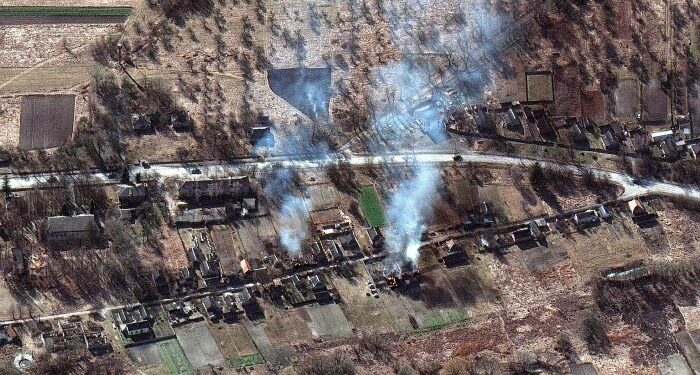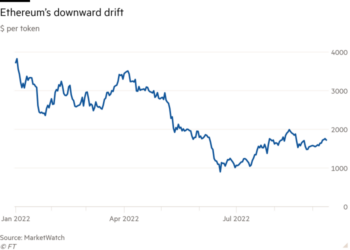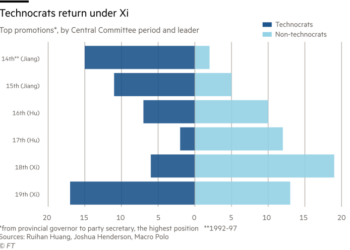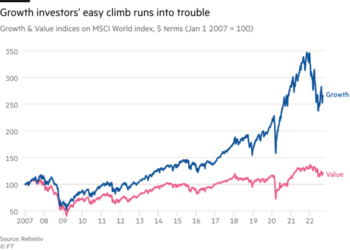Stretched out across as much as 60km of open countryside, slowed down by fuel shortages and sabotaged roads, a huge Russian military convoy of troops and weapons has presented an obvious target for air assault as it snaked from Belarus south to Kyiv over the past three days.
Yet despite unverified footage of a handful of isolated attacks on the convoy by Ukraine’s Turkish-made drones, its lethal payload has inched towards the capital largely unscathed. It is a striking example of what analysts say is the surprisingly small role that air power has played in the war.
“That big convoy . . . is a great target for attack aircraft, something with cannon that can strafe miles and miles of it,” said Rob Lee, senior fellow at the Foreign Policy Research Institute. “But you haven’t seen that.”
The reduced role of air power so far in the war is down to neither side establishing superiority in the skies above the battlefield, say analysts.
Russia failed to completely disable Ukraine’s air defence systems in the initial stages of the invasion, and Ukrainian ground troops with surface-to-air rockets have been successful against Russian aircraft.
Meanwhile, Moscow’s mobile anti-aircraft systems have targeted Ukraine’s limited air force and made Kyiv cautious about using its Bayraktar TB2 drones too widely.
“It’s a wash between the two of them in terms of air control,” said a senior western intelligence official. “Neither side has superiority. Both sides are able to inflict harm on the other.”
Before the conflict, western officials had forecast that Russia would enjoy the kind of air supremacy that allowed it to conduct large-scale air strikes in the Syrian war.
But “failure on the first day of the Russians to destroy the Ukrainian air defence facilities” has hampered Moscow’s invasion strategy, a second western official said. “Part of the plan was on having air superiority from the outset.”
Russia has roughly 300 military aircraft around the borders of Ukraine, but has used few in the invasion, even as it deploys 80 per cent of its prepared ground troops. Russia has used attack helicopters and some short-range fighters but made very limited use of long-range attack aircraft and bombers.
“One reason may be that [Russia] is not confident they destroyed Ukraine’s air defences and are not confident they can send fighters overhead without losing them,” said Lee.
On the Ukrainian side, the country’s far smaller and less modern air force is still in operation — something that defence analysts said was a result of inaccurate Russian cruise missile strikes failing to destroy air fields, planes and radar systems in the opening hours of the assault.
But Ukraine has likely not attempted to inflict major damage on the slow-moving Russian convoy — which western officials say is likely intended to encircle and lay siege to Kyiv — for fear of endangering its remaining number of jets and drones, say analysts.
Ukraine’s small inventory of TB2s — they reportedly began the war with just 20 — means they are not willing to deploy them too widely, analysts and officials said, while their low payload makes them less effective against larger convoys.
“TB2s can be useful, but they cannot win the war,” said the western intelligence official.
“Their inventory was not so great to start with . . . certainly not for a long war,” the official added. “You want to send them and use them, but you also want to get them back.”
Ukraine’s defence ministry said on Wednesday it was expecting more drones to be delivered from Turkey soon, though analysts cautioned that Russia would probably adapt and be able to negate the unmanned weapons’ effectiveness.
“Over the next few days we are going to see Russia using more electronic warfare . . . and Ukrainian air defence systems will go increasingly offline,” said Mathieu Boulègue, research fellow at the Russia and Eurasia Programme at Chatham House.
At the same time, there are signs that Russia may be shifting towards greater use of air power as its ground offensives struggle in urban areas.
Ukraine’s defence ministry said this week that there had been increased air strikes against the city of Kharkiv, where it was harder to resist Russian aircraft as the air defence system in the east of the country had been destroyed.
In a sign that its operational air defence systems may be running low on supplies, Ukraine has also expressly requested munitions for them from Nato allies. The Netherlands, Slovakia and other countries have said they are sending hundreds of air defence rockets to the country.
Russia on Tuesday also used cruise missiles to target the city of Zhytomyr, which hosts a Ukrainian air base. Analysts said this could be a sign of Moscow attempting to further degrade Ukraine’s air abilities.
“It is important to remember that we are only five days into what could easily turn into a protracted campaign,” wrote Justin Bronk, a research fellow at the Royal United Services Institute, on Monday in a paper titled “The Mysterious Case of the Missing Russian Air Force”.
“The fact that there have only been a few confirmed sightings of Russian fixed-wing sorties over Ukraine should not obscure the fact that the [Russian] fighter fleets remain a potentially highly destructive force, and one that could be unleashed against aerial and fixed ground targets at short notice over the coming days,” he added.











